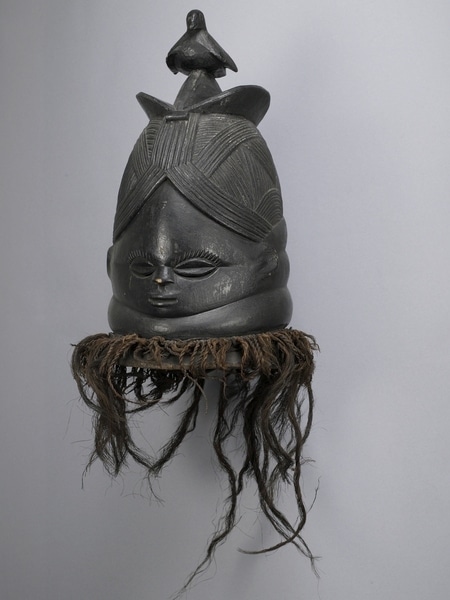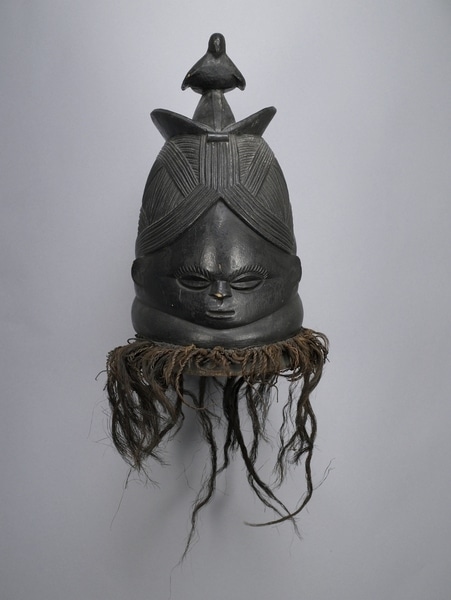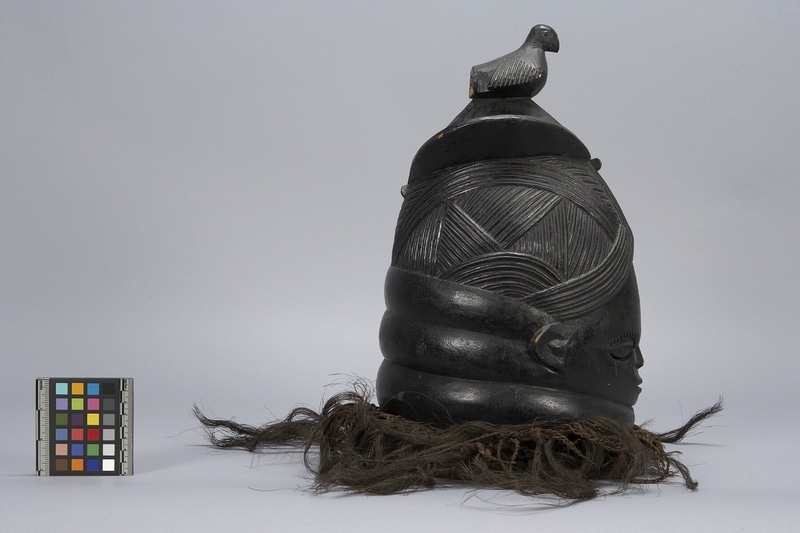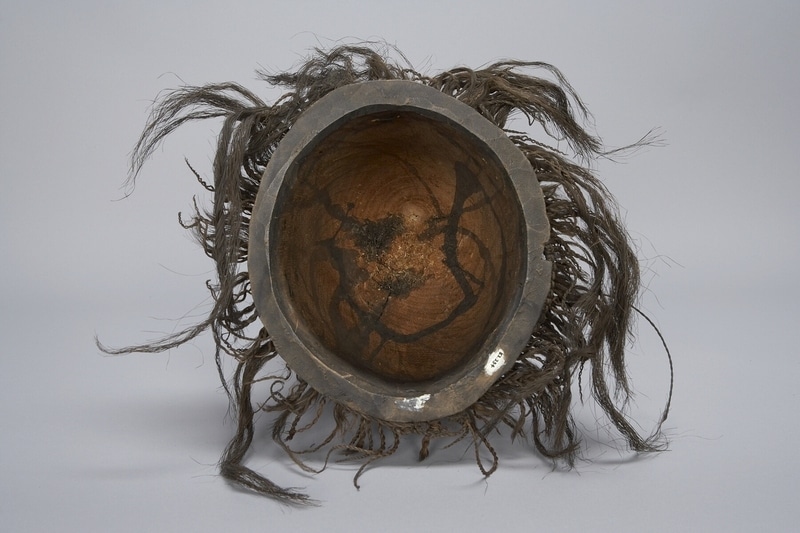Helmet Mask Item Number: K2.234 from the MOA: University of British Columbia




Description
Helmet mask with a domed shape that has a small face, elaborate ridged coiffure surmounted by a bird, and a sisal fringe around base. Highly polished.
History Of Use
The sowei, or bundu, mask is made by men but are owned, cared for, worn, and performed as a dance mask by women in the Sande women's society, during girls' initiation camps. There they are prepared for marriage, trained in both domestic and economic pursuits and in singing and dancing. The masked dancers visit the camps to remind the girls of the ideals of female beauty and virtue. When the girls leave, they are considered to be women ready for marriage. During a dance, the mask is worn by a "ndoli jowei" performer, with a full costume concealing the dancer's identity. With their elaborately coiffured hair, neck folds and bright faces- they are burnished with palm oil before being danced- the masks express female ideals of beauty.
Iconographic Meaning
The sisal fringe around the base is meant to resemble elaborately braided hair. The creases in the neck denote good health. The smooth skin and broad forehead symbolize youthfulness, intelligence and nobility. The composed expression reflects an inner serenity. The bird figure perched on top of the head has many meanings: clairvoyance, love, fertility, power, danger, discipline, prudence and laughter. The mask’s shining blackness connotes the essence of female beauty and moral purity.
Item History
- Made in Sierra Leone between 1900 and 1960
- Owned by Berkeley Galleries Ltd. before March 1960
- Received from Berkeley Galleries Ltd. (Seller) and Leon & Thea Koerner Foundation (Funding source) during March 1960
What
Who
- Culture
- Mende
- Previous Owner
- Berkeley Galleries Ltd.
- Received from
- Berkeley Galleries Ltd. (Seller) and Leon & Thea Koerner Foundation (Funding source)
Where
- Holding Institution
- MOA: University of British Columbia
- Made in
- Sierra Leone
When
- Creation Date
- between 1900 and 1960
- Ownership Date
- before March 1960
- Acquisition Date
- during March 1960
Other
- Condition
- fair
- Current Location
- Case 98
- Accession Number
- 0023/0027